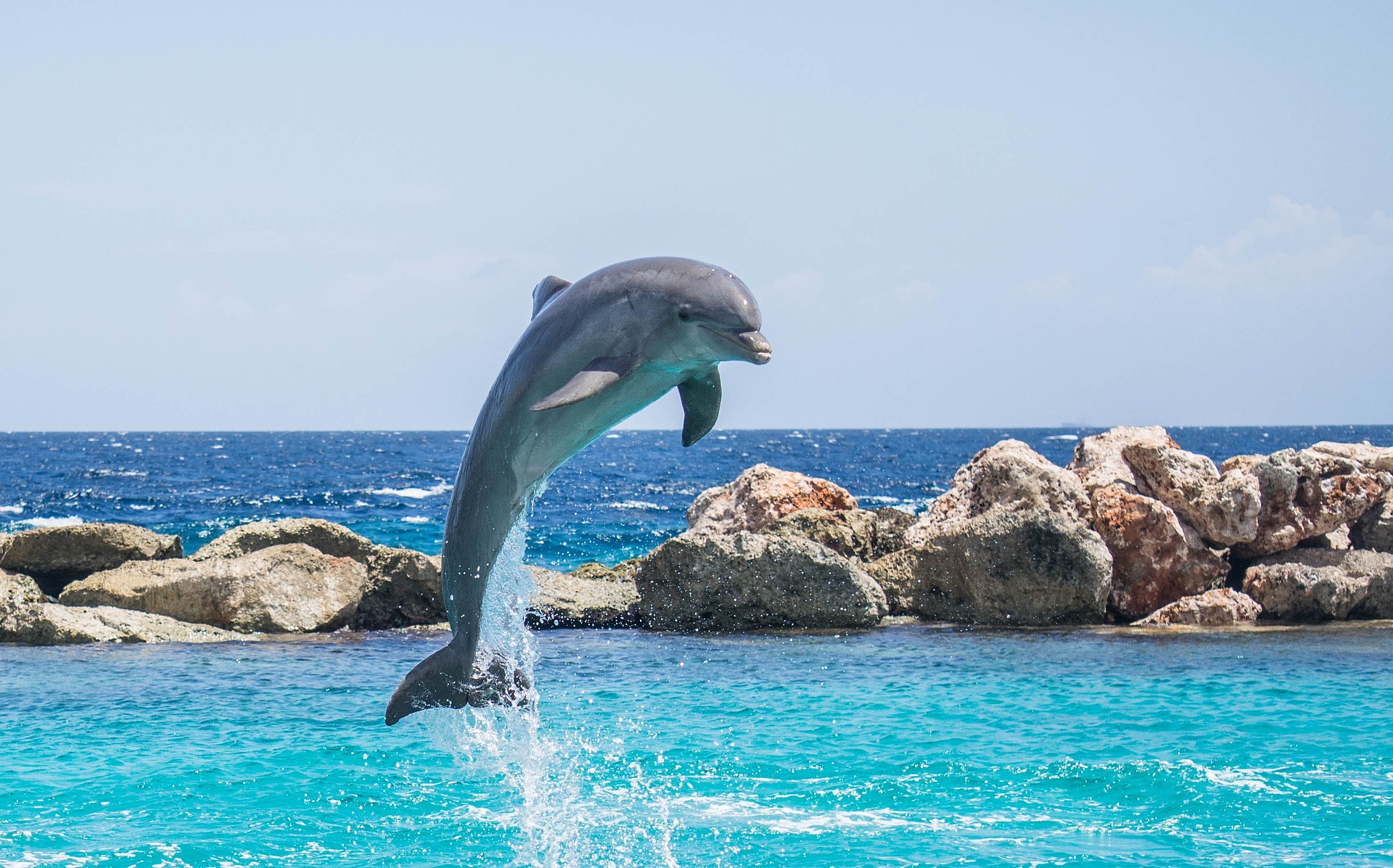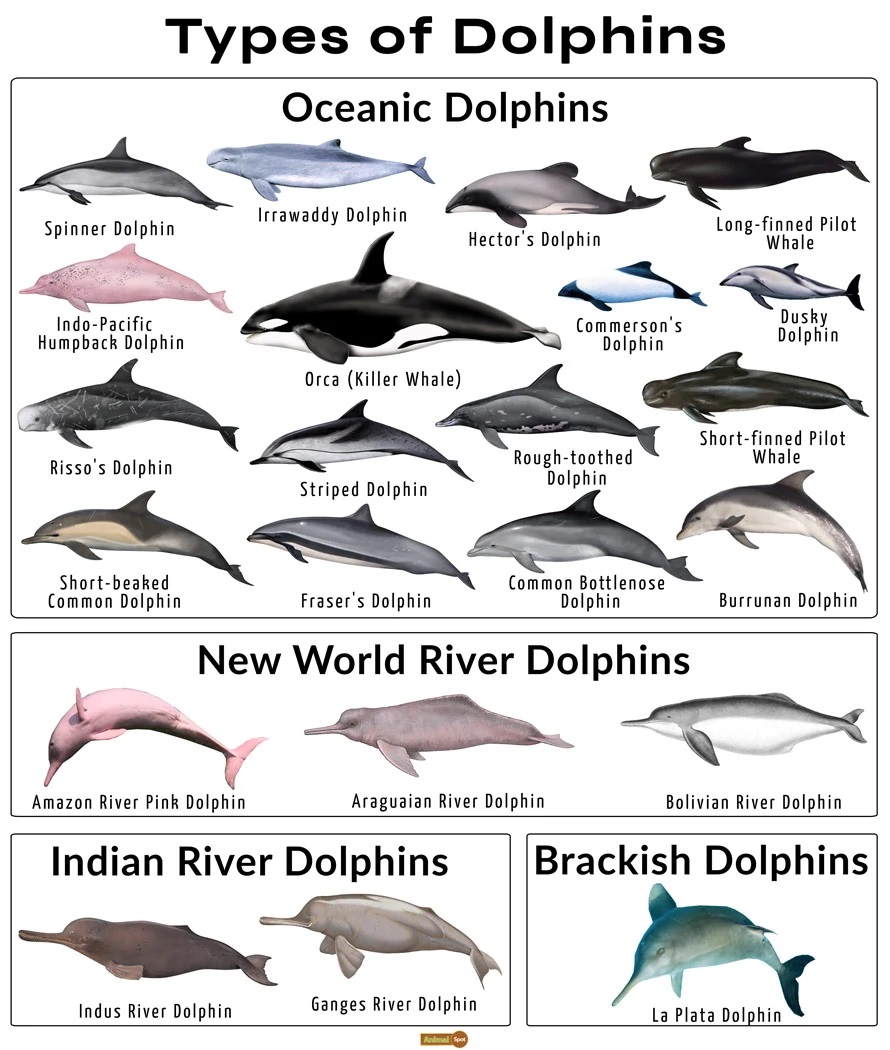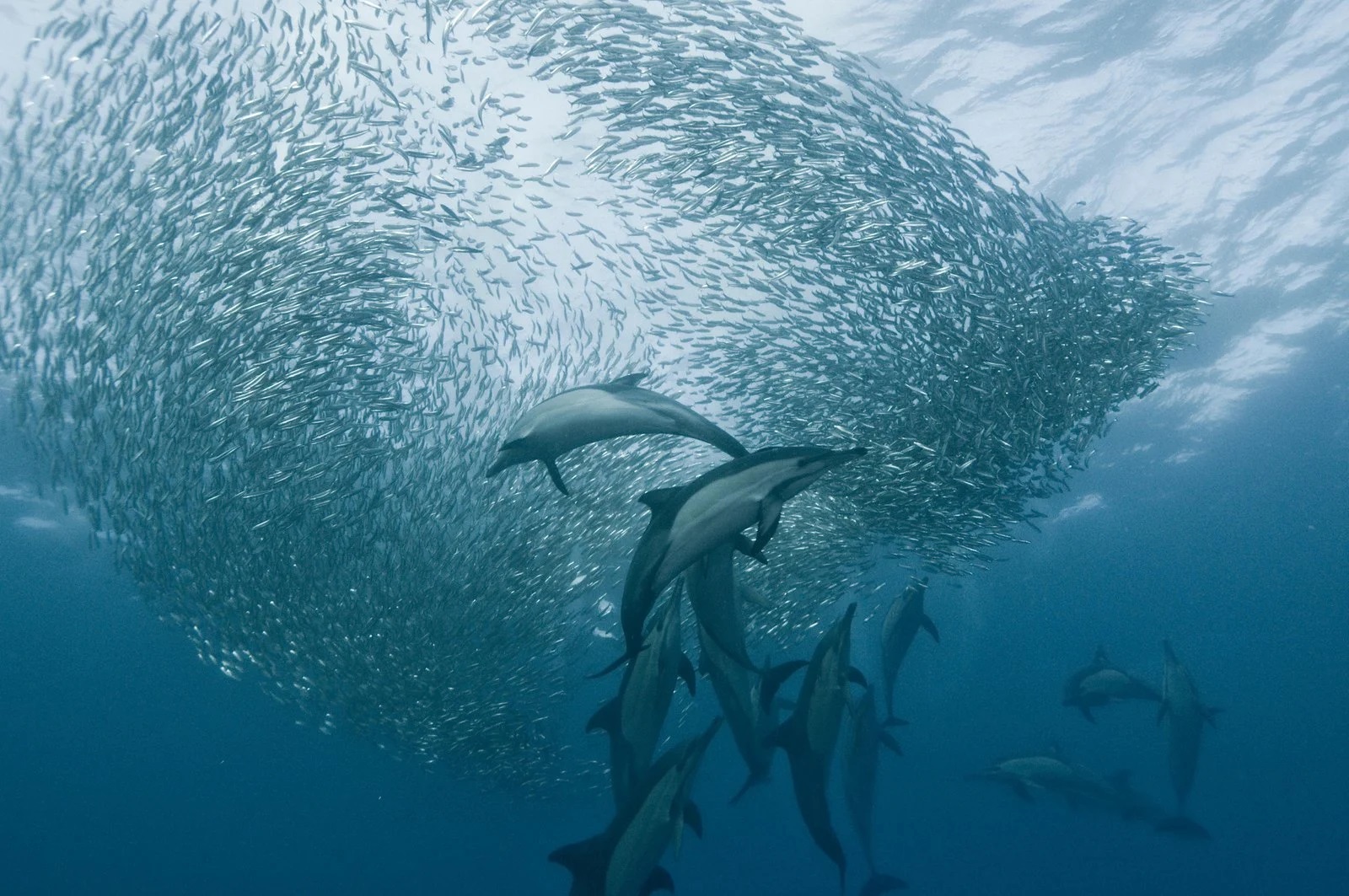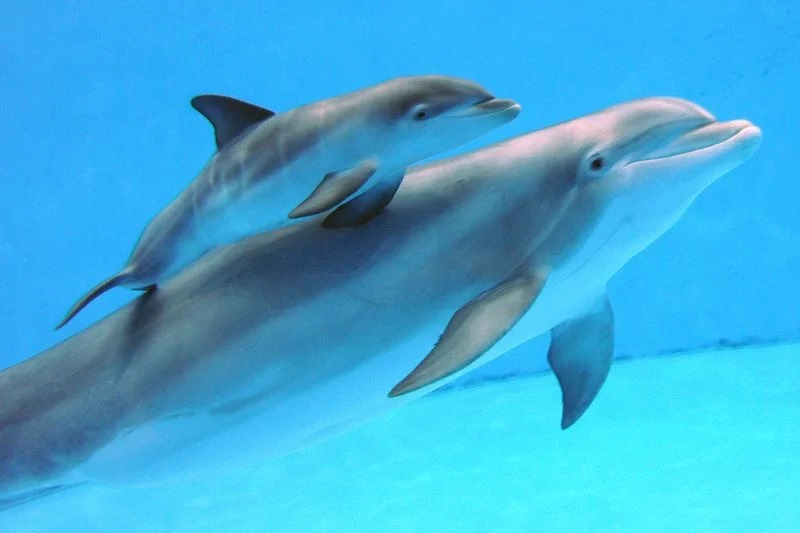My mother, (age 66), my self (42,) and my daughter (18) all went snorkeling together we had an awesome time. The guides were funny and had a lot of information. They...
In September 13, 2024The oceanic dolphins are mammals of a very heterogeneous family of odontocete cetaceans. They measure between 2 and 8 meters long, with a fusiform body and a large head, an elongated snout and only one spiracle on the top of the head (breathing hole that many marine animals have as air or water contact with their internal respiratory system). They are strict carnivores. They are among the most intelligent species that inhabit the planet. They are found relatively close to shorelines and often interact with humans. Like other cetaceans, dolphins use sounds, dance and jumping to communicate, orient themselves and reach their prey; also use echolocation. Today, the main threats to which they are exposed is water polution and the climate change.

Dolphins evolved from land animals
Dolphins didn't always live in the water: Millions of years ago, the ancestors of dolphins roamed the land. The dolphins we know today evolved from mesonychids, an extinct order of wolf-like ungulates that had hoof-like toes at the end of each leg. But about 50 million years ago, these ancient animals decided that the ocean was a more suitable place to be, so they returned to the water and evolved into the dolphins we see today. Evidence of this evolutionary history is palpable in living dolphins, as adult dolphins have remnant toe bones in their flippers, as well as vestigial leg bones.
How many species of dolphins are there?
Although the bottlenose or bottlenose dolphins are the best known and most recognizable, there are 43 other species of dolphins. Most species live in temperate and tropical oceans, but some live in cooler oceans or rivers. Depending on their species, dolphins can vary considerably in their physical attributes and behavior, such as the case of the killer whale, which can measure 6 to 8 meters long and weigh about 4,000 kilos.

dolphin teeth
Although some species of dolphins have up to 100 teeth, they do not use them for chewing. They use their teeth only to hold the fish and then swallow them. Large dolphins like the Orca can consume up to 225 kg of fish per day. They usually work as a team to surround a school of fish and get them as full as possible. They then plow through the center of the fish concentration and eat whatever they need. And they even take turns doing this so that the fish don't scatter and everyone gets a chance to eat satisfactorily.
Dolphins can see the sound
This is not a superpower, but it is true that dolphins use echolocation to see the world around them. This ability allows them to calculate the distance, shape, density, movement, and texture of an object. Its sonar is the best in the animal kingdom, and it is also superior to that of the bat or the artificial one. They have the incredible ability to emit sounds with a frequency of 120 kHz. To put this into perspective, humans with excellent hearing can hear sounds with frequencies ranging from 20 Hz to 20 kHz. However, dolphins generally receive optimal results when the object is no more than 200 meters away from them.

Dolphins give themselves names
Scientists have discovered that dolphins develop their own individual whistles (names) to identify themselves and other members of their pod. Since visibility is often poor in the ocean, dolphins rely on sound to convey messages and communicate. However, what was not known was the complexity of their communication and the consciousness that these animals possess. And it is that identity is very important for dolphins since they are social animals that live in groups.
Dolphins can turn off your brain
As mammals, dolphins must stay on the surface of the ocean in order to breathe. To sleep, they rise to the surface, exposing their blowholes, shutting down one side of their brain while keeping the other half active to continue breathing and stay alert. Instead of sleeping for several hours at a time, they rest one hemisphere of their brain for 15 to 20 minutes, taking these "naps" several times a day. By resting one hemisphere of their brain at a time, dolphins can continue swimming, breathing, and watching for predators. So if you've ever heard the phrase "sleeping with one eye open", you know what you can associate it with.

Their language remains a mystery
Although marine scientists have studied and recorded dolphin vocalizations for decades, many aspects of the animals' language and how they communicate are still unknown. Scientists haven't yet broken down the individual units of dolphin sounds, and they're still searching for a Rosetta Stone that links the animals' vocalizations to their behavior. By using new technologies, including algorithms and high-frequency recorders that work underwater, scientists hope to finally unlock the mystery of dolphin language.
What do dolphins eat?
Dolphins are carnivorous predators. They use their teeth to hold onto their prey, but then swallow it whole and break it into small pieces. They are relatively light eaters. They consume a wide range of animals, including fish, squid, crustaceans, shrimp, and octopus; it is even possible to see them following fishing boats to enjoy the “waste” thrown overboard. The orca, the largest species of dolphin, may also eat marine mammals such as seals or seabirds such as penguins.

Reproduction
Despite the fact that sexual maturity is variable between dolphin species, males generally reach maturity at 11 years and females at around 5 or 7 years. Since the genitalia are hidden in both males and females, both sexes have a genital slit, but females also have a mammary slit on each side. Female dolphins tend to be sexually receptive for most of the year and are usually the ones to initiate courtship for mating. Just before mating occurs, the male will often rub or pat the female on the neck and display an "S-curve" posture.
And... the dauphines arrive
Depending on the species, most female dolphins carry her calves for 9 to 17 months before giving birth. Interestingly, the pups emerge tail first, rather than head first, so they don't drown during the birthing process. After nursing for a year or two, the calf usually stays with its mother for the next few years, before mating and having young of their own.

Now you know a bit more of this beautiful creatures. So next time you take your snorkel tour, clean well your snorkel mask and pay attention to potencial encounters with the bottlenose dolphin in your Cancun Snorkeling Tour.
Did you like reading us? Keep the conversation going on social media, share and follow us:
Facebook: Facebook
Instagram: Instagram
My mother, (age 66), my self (42,) and my daughter (18) all went snorkeling together we had an awesome time. The guides were funny and had a lot of information. They...
In September 13, 2024Luis and the other tour guide (can’t remember the name sorry) were very nice and patient with everyone. They kept checking in on everyone to make sure no one got left...
In June 06, 2024Easy to get picked up and a great time snorkeling out in Puerto Morelos! Our guide and coral...
In April 25, 2024Our tour guides - Luis and Jesus - were amazing. They were very kind, patient and great at guiding us through the reefs. They would point out large aquatic life and...
In April 11, 2024We took our family of 9 on a snorkel trip with this company and had the best time! Our guides were super friendly and you could tell they love what they...
In February 29, 2024Our guides were amazing and definitely had a great time. I would recommend this to all my family and friends....
In February 29, 2024An amazing time seeing the reef! The staff were incredibly helpful and quick to point out...
In February 23, 2024The guides were great. Good time, had by all...
In February 22, 2024I have snorkeled at many locations, and this one near Puerto Morelos y undoubtedly one of the bests. Highly recommend...
In December 08, 2023They did an excellent job of taking care of everyone when we went snorkeling....
In December 03, 2023